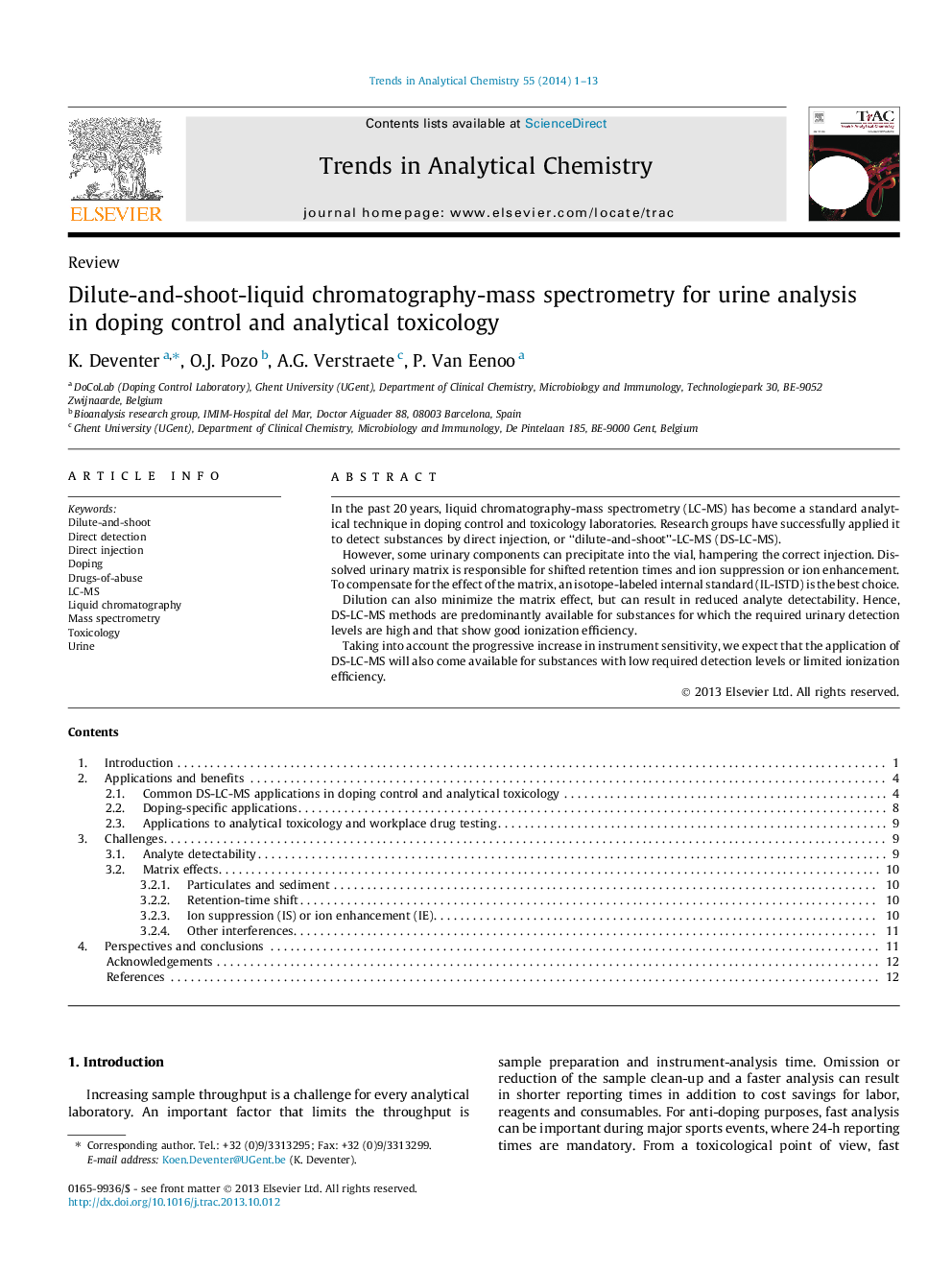| Article ID | Journal | Published Year | Pages | File Type |
|---|---|---|---|---|
| 1249115 | TrAC Trends in Analytical Chemistry | 2014 | 13 Pages |
•We review the direct injection of urine samples in combination with LC-MS.•The analytical benefits include detection of poorly extractable compounds.•The difficulties relate to the direct injection of the urinary matrix.•Urinary matrix effects can be reduced by applying dilution (dilute-and-shoot).•Future challenges include detection of substances at low urinary concentrations.
In the past 20 years, liquid chromatography-mass spectrometry (LC-MS) has become a standard analytical technique in doping control and toxicology laboratories. Research groups have successfully applied it to detect substances by direct injection, or “dilute-and-shoot”-LC-MS (DS-LC-MS).However, some urinary components can precipitate into the vial, hampering the correct injection. Dissolved urinary matrix is responsible for shifted retention times and ion suppression or ion enhancement. To compensate for the effect of the matrix, an isotope-labeled internal standard (IL-ISTD) is the best choice.Dilution can also minimize the matrix effect, but can result in reduced analyte detectability. Hence, DS-LC-MS methods are predominantly available for substances for which the required urinary detection levels are high and that show good ionization efficiency.Taking into account the progressive increase in instrument sensitivity, we expect that the application of DS-LC-MS will also come available for substances with low required detection levels or limited ionization efficiency.
